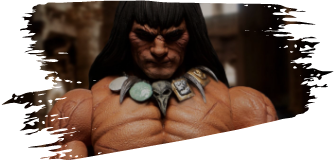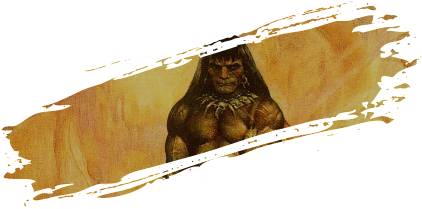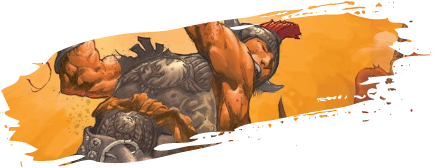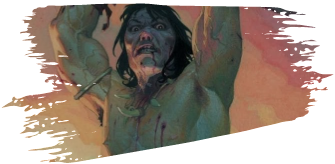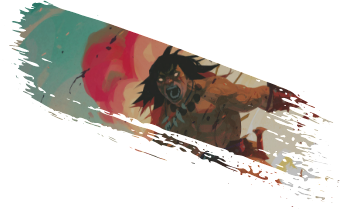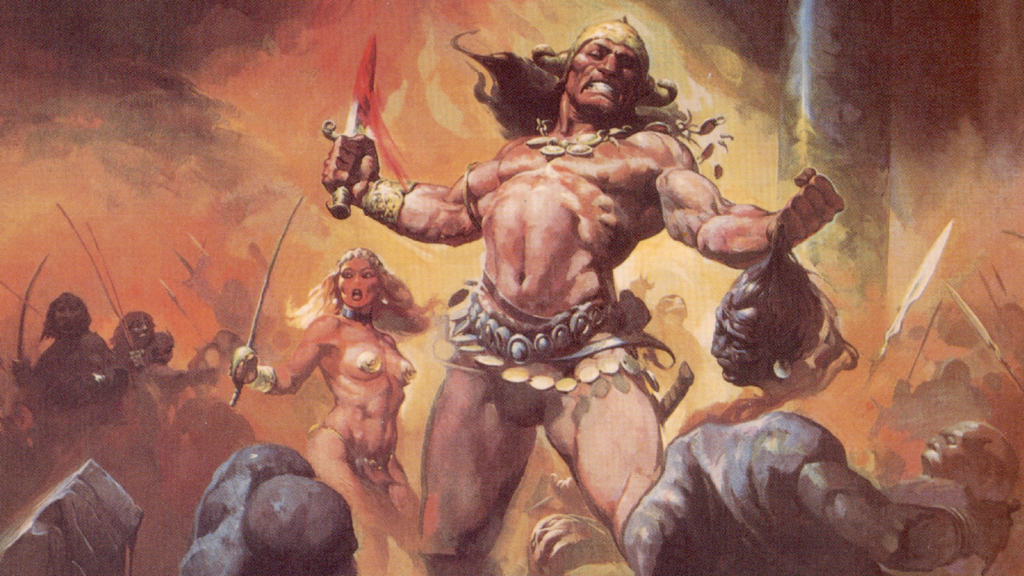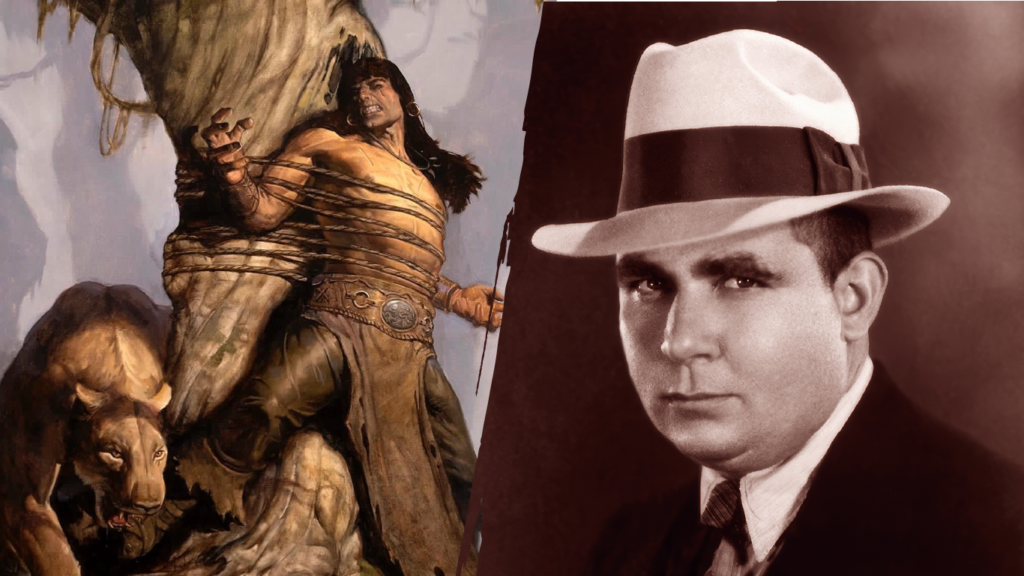
Picture this: A weathered scroll, its edges crumbling, reveals a tale of a towering barbarian king.
Next to it, a sleek comic book showcases the same warrior, now embroiled in a battle with eldritch horrors.
On a nearby screen, pixels form yet another version of this legendary figure.
Three depictions of Conan the Barbarian – but which one is “real”?
For decades, fans have debated the “true” nature of Conan, arguing over canon and adaptation.
But what if there’s more to this story than meets the eye? What if the very concept of Conan canon is as fluid and unpredictable as the Cimmerian himself?
Join us as we reveal how, in the Hyborian Age, fact and fiction intertwine, and every interpretation adds a new thread to an ever-expanding legendary barbarian.
Examining Robert E. Howard’s Original Conan
To truly appreciate the rich complexity of Conan the Barbarian, we must first understand the fertile ground from which it sprang: the vivid imagination and meticulous craftsmanship of Robert E. Howard himself.
Howard’s Conan was a creature of presence, described in almost poetic terms. Conan was “compact” rather than short, “wiry” instead of muscled, Conan filled a room with his aura rather than his physical bulk. This portrayal allowed each reader to form their own vision of the Cimmerian, a testament to Howard’s skill as a writer.
Howard’s world-building for the Hyborian Age was equally nuanced. While not essential for enjoying the stories, his essay on the subject reveals a depth of thought that might surprise casual readers. The Hyborian Age was more than just a backdrop; it was a character in its own right, shaped by Howard’s correspondence with contemporaries like H.P. Lovecraft and influenced by the boom-town chaos of early 20th century Texas.
The themes and motifs in Howard’s Conan stories are also remarkably complex. The tension between barbarism and civilization, a recurring theme in Howard’s correspondence with Lovecraft, found its way into the Conan tales. The corruption and political machinations of Howard’s Texas boomtowns are mirrored in the cities of the Hyborian Age, adding a layer of gritty realism to the fantasy setting.
As we explore the world Howard created,each new story, comic, or film adds another layer to the legend of Conan, creating a rich melange of tales that might conflict in details but remain true to the spirit of one genius creation. It’s this malleability, this ability to grow and evolve while staying rooted in Howard’s original vision, that has allowed Conan to endure and thrive across decades and mediums.
Beyond Howard and the Birth of the Legend of Conan the Barbarian
As Conan’s legend grew beyond Howard’s original tales, it took on a life of its own, evolving into a cultural phenomenon that has captivated audiences for nearly a century. This expansion of the Conan mythos, far from diluting the character’s essence, has instead enriched it, creating a web of stories that both honor and reimagine the original creation.
Still, in the vast and varied world of Conan the Barbarian, one principle stands paramount: Robert E. Howard’s original stories are the only true canon. Everything else – from comics to films, from TV shows to video games – exists in a realm of legend, passed down through the ages with all the malleability and mystery that entails.






This approach, adopted by Heroic Signatures as the official stewards and rights holders of the Conan IP, opens up a world of possibilities for officially licensed adaptations and expansions. Just as ancient myths and legends often have conflicting versions, so too can the officially sanctioned tales of Conan contradict each other without diminishing their value or appeal. The 1982 film, for instance, while not strictly adhering to Howard’s original vision, has become a beloved part of Conan lore. Its interpretation of the Cimmerian warrior, while different from Howard’s, has inspired countless fans and even influences modern comic book artists who pay homage to it in their work.
Similarly, the Conan paperbacks by L. Sprague de Camp, controversial as they may be among some purists, played a crucial role in keeping Conan alive in the public imagination. Even the 1980s children’s cartoon, sanitized though it was, introduced a new generation to the Hyborian Age. Each of these adaptations, regardless of their fidelity to Howard’s original stories, contributed to the rich tapestry of Conan’s legend.
This “legendary” status extends to ongoing and future projects as well. The Battle of the Black Stone comic series, for example, draws inspiration from lesser-known elements of Howard’s stories and the sources he himself read. Yet, it’s not bound by strict adherence to canon. Instead, it’s free to explore and expand the Conan mythos in new and exciting (and terrifying) ways.
The beauty of this approach lies in its flexibility. Fans are invited to engage with whichever versions of Conan resonate with them most, without the constraint of a rigid, all-encompassing canon. Some may prefer the gritty realism of Howard’s original tales, while others might gravitate towards the over-the-top action of later adaptations. All are valid, all contribute to the enduring popularity of Conan, and all are doing their part to shape the legend.
This perspective also allows for a more dynamic and inclusive fandom. Debates about what is or isn’t “true” Conan become less about right and wrong, and more about exploring different facets of the character and his world. It encourages creativity and diversity in storytelling, ensuring that Conan remains relevant and exciting for new generations of fans.
Of course, managing such a diverse and storied character comes with its challenges. As the official rights holders, Heroic Signatures carefully selects and collaborates with licensed partners who understand and respect the core essence of Conan, while still bringing their own creative vision to the table. This ensures that all official Conan content, whether it closely follows Howard’s canon or explores new legendary territories, maintains the integrity of the character and his world.
As we look to the future, this approach to Conan’s legacy promises exciting developments. While specific details of upcoming projects remain under wraps, the potential for new and innovative explorations of the Conan mythos is boundless. By embracing the legendary status of non-Howard works, we open the door to endless possibilities, ensuring that the legends of Conan the Barbarian will continue to captivate and inspire for generations to come.
The world of Conan is vast, contradictory, and endlessly fascinating. It’s a realm where canon and legend dance in eternal combat, much like the Cimmerian himself.
But here’s the real magic: your voice matters in this grand narrative.
What’s your Conan theory?
Which legends ring ‘true’ to you?
Share your thoughts, debate with fellow fans, and help shape the future of this timeless character.
Because in the end, Conan belongs to all of us – a legend that grows stronger with every retelling, every reinterpretation, and every passionate discussion.
The future of Conan is bright, expansive, and waiting for you to leave your mark.

Lo Terry
In his effort to help Heroic Signatures tell legendary stories, Lo Terry does a lot. Sometimes, that means spearheading an innovative, AI-driven tavern adventure. In others it means writing words in the voice of a mischievous merchant for people to chuckle at. It's a fun time.

